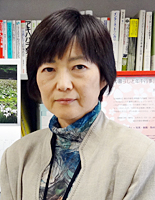What is a larger network that utilizes consensus building tools? Masako Nakamura (Professor of Tokyo City University)

From the dawn of the Internet in the 1990s to the present, online tools for citizen participation have flourished several times. The first was citizen electronic conference rooms (electronic bulletin boards), mainly around 2000. The most representative and long-lived system was the Citizen Electronic Conference Room in Fujisawa City, Kanagawa Prefecture, which opened in 1997 and lasted for 20 years.
However, this was only an exception, and most of them disappeared due to lack of growth in posts and user numbers. After that, the interest of those involved shifted to local SNS. Although some of these have achieved great results and lasted for a long time, overall they are said to have reached their peak around 2010.
Since around 2020, online systems for comprehensive consensus building and citizen participation have been attracting attention as a so-called third boom.
In the smart city/supercity initiative, which aims to upgrade entire cities, it is a natural progression to digitize the citizen participation and consensus building that forms the basis of decision-making.
Over the past quarter century, online communication has deeply penetrated the lives of ordinary citizens, and the experience of the coronavirus pandemic has increased the sense of crisis that Japanese society is lagging behind in many aspects of digitalization. ing.
Decidim, an open source software from Barcelona, Spain that is spreading throughout the country, and JOIN from Taiwan are well known in Japan.
Other platforms include Loomio, DemocraciaOS, Pol. Various systems such as IS are used in various countries around the world.
In Japan, Kakogawa City attracted attention for its introduction of Decidim, and its introduction has progressed in other regions as well.
Liqlid, which was independently developed by a Japanese company, has also been adopted by dozens of local governments and communities, including Kamakura City.
The tools of the ’20s draw on the (sometimes bitter) experience of online citizen participation since the dawn of time. Visualize the feedback of other participants through likes, approval/disapproval icons, voting functions, etc. when posting opinions and ideas, a system that encourages dialogue not only between citizens and the government, but also between citizens, and a system that divides each step into stages. These include the design of a “process” that allows for consensus to be reached visually, the incorporation of synergies with real-life venues such as face-to-face workshops, and the provision of sufficient data to serve as the basis for discussion based on open data. .
In addition, successful examples from other countries often involve practical implementation, such as participatory budgeting and reflection in policy. For example, in Taiwan, there are cases where measures and systems originated from JOIN have actually been implemented. In Japan, many events are still considered public hearings, but if things continue as they are, they may fade away as a fad.
What is needed for a citizen participation system to take root in the medium to long term is the readiness to incorporate it as parts and rearrange the actual circuits, and the design of a larger network to do so.
